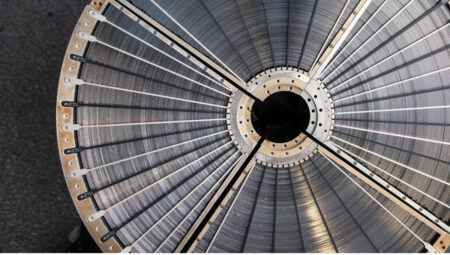A recent test of Agni V was very successful. Now it is in 1st phase of testing by the army before induction in India’s missile department.
India is planning to conduct its first user trial of the nuclear-capable Agni-5 ballistic intercontinental missile this month, The New Indian Express revealed.
According to the Tamil Nādu-based media outlet, the missile will face trial on September 23; it will pave the way for its serial production.
Once inducted, the Agni-V will be a game-changer in the geopolitical game for India.
A long-range Agni-V, which can hit a target within the range of 5,000-8,000 km, enables India to bring all-important Chinese cities, including Beijing, under threat.
With the inclusion of this missile, India can answer to a Chinese nuclear attack with massive retaliation, as laid out in the nuclear doctrine.
Thus, the rocket will play an essential role in establishing the credibility of deterrence viz-à-viz China.
India was planning to induct Agni-V by 2020 after the hat-trick pre-induction trials in 2018. However, the process was slow due to the Covid-19 pandemic.
Some necessary missile tests with multiple independently targetable reentry vehicles (MIRV) got delayed.
As per the report, defence sources say that the upcoming trial of the Agni-V missile assumes importance as it will come with the MIRV capacity of carrying multiple warheads.
” MIRV technology was successfully tested in an Agni-V missile that delivers two manoeuvrable warheads to two different locations for the first time. The MIRV has the capacity of Agni-V that will give India the much-needed deterrence,” said the sources.
Features of Agni-V
Agni-V has a range of 5,000 kilometres (3,107 miles). It comes with a “ring laser gyroscope-based inertial navigation system and micro inertial navigation system.”
The work of the gyroscope is to display the missile location and trajectory. According to the Print sources, the ring-laser gyroscopes are more accurate than other navigation technologies.
The three-stage solid-fuel rocket that weighs 50 tons and 1.75m has a payload capacity of 1.5 tons. The weapon’s range allows it to strike targets in parts of Africa, Europe, and Asia.
India missiles still have a lot to improve. Reliability, Mass, MIRVs. Agni V does provide strategic nuclear deterrence against China.
It was the 5th launch of the Agni-V in a canister form.
It is a fire and forgets missile that cannot be stopped, except by an interceptor missile once fired.
Strategic Forces Command
The strategic forces command (SFC) forms part of India’s Nuclear Command Authority (NCA).
It is responsible for the management and administration of the country’s tactical and strategic nuclear weapons stockpile. It was formed on 4rth January 2003 by Vajpayee Government.
Agni Prime missile test
Unlike the single-stage Agni-I, the double-stage Agni Prime will have a canister version with the flexibility to be fired from road and rail-mobile launchers.
The sleek missile that weighs less than the previous variant due to the integration of new technologies will be more lethal in terms of power and killing ability.
A defence official associated with the Agni project said the Agni Prime comes with the cutting-edge technologies used in 4000-km range Agni-IV and 5000- km Agni-V missiles.
The two-stage and solid-fuelled rocket will work on inertial navigation systems based on advanced ring-laser gyroscopes.
Both stages have composite rocket motors, and guidance systems are capable of electromechanical actuators.












